
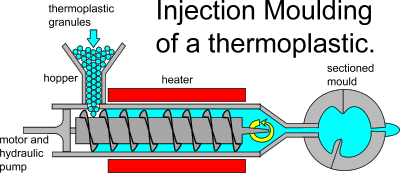
This technique is widely used for forming thermoplastic materials. It is similar to the casting technique used to form metal components. The plastic (in a powdered or granular form) is put in a hopper. A screw thread turns forcing the plastic material through a heater, melting it. When all the materials has melted the screw thread then acts as a ram and forces the plastic into mould, where it cools and solidifies. Injection moulding is a very common process used in the manufacture of the casing of many electronic products such as TV's and radios. |
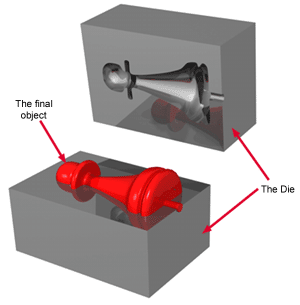 |
|
Advantages High production rates are possible. (A typical cycle time
for a 3mm thick part would about 40 seconds) Disadvantages Very expensive to set up - the tools (the dies or moulds) are produced to a high degree of accuracy and surface finish. |
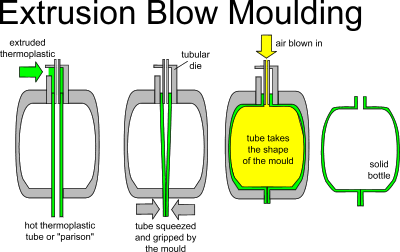
Blow moulding is used to manufacture bottles and containers with very thin walls. Blow moulding first requires a tube of plastic to be extruded. The tube of molten plastic is extruded between the two halves of a mould. Before the plastic cools the two halves of the mould are brought together and air is blown into the centre of the material through a blow pin. This forces the plastic out forming the shape of the mould. The plastic can then be cooled and removed. This technique is used to produce plastic bottles. Advantages - High production rates. |
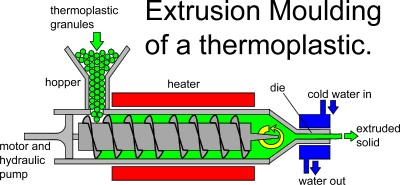
This process is widely used to form metal and plastic components that have constant cross sectional shapes such as pipes, curtain rails etc. The extrusion process is similar to injection moulding. Plastic granules are heated in a hopper and a screw thread forces the material through a die.The material is then cooled. Extrusion can only be used for simple shapes and the end product generally has a poor quality finish. |
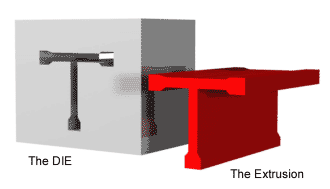
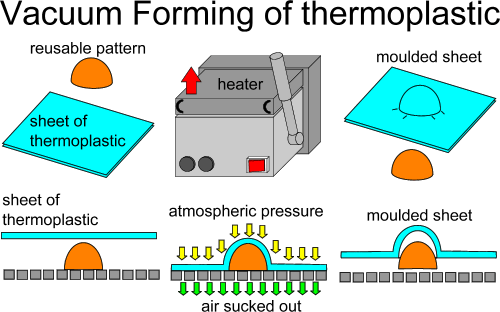
Vacuum forming is used to make simple moulds using thin sheets of thermoplastic. High impact polystyrene sheet is what is used in school (HIPS). PVC can also be used. A mould is created from wood or epoxy resin and this is placed on the table (platten) of the vacuum forming machine. The sheet plastic is heated until it becomes soft. The table with your mould on is lifted into position and a vacuum is used to draw the plastic over the mould. Vacuum forming only works with thin plastics and moulds with no undercuts. The plastic can then be trimmed to the required shape. |
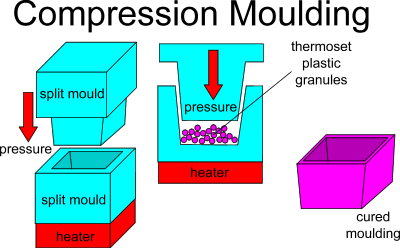
This is how thermosets are formed. The reaction occurs in the mould as the granules are heated and compressed. UF or urea formaldehyde and MF melamine formaldehyde are formed by this method. Line Bending |
(edited).JPG)

